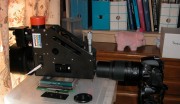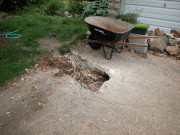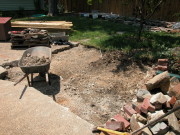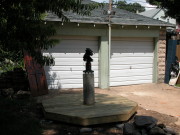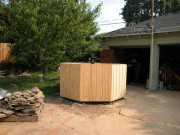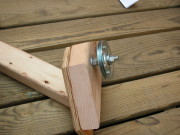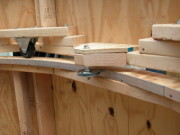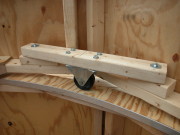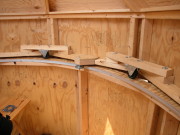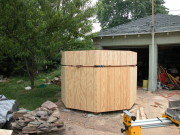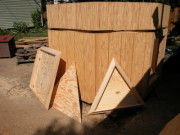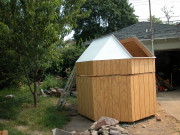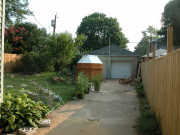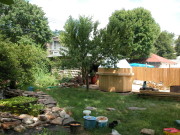About two months ago I acquired a used Optec TCF-s focuser for the telescope in the North Dome. The focuser is designed to compensate for the changing focus position of the telescope as a function of temperature (TCF = Temperature Compensating Focuser). It uses a temperature probe attached to the telescope tube to determine the temperature, then moves focus based on a coefficient that expresses the number of encoder steps (each resulting in 0.0022 mm movement of the focuser) per degree Celsius decline in temperature. According to Optec’s documentation, the coefficient is around 80 steps per degree Celsius for a typical 8-inch f/10 Schmidt-Cass telescope (like a Celestron or Meade 8-inch). Basically, as the temperature falls the telescope shrinks, reducing the distance between primary and secondary mirror. That results in the focus point of the telescope being pushed further out (increasing “backfocus”). Of course, I’m not using an 8-inch f/10 telescope – the ‘scope in the North Dome is a 14-inch f/11, so I needed to determine the coefficient specific to my rig.
Over the course of about a month I kept the main mirror stationary and only focused using the TCF. I would typically re-focus every couple of hours, making note of the temperature and the position of best focus. The chart of the results is shown below. Given these data I arrive at a value of 161 steps per degree Celsius. One thing that is somewhat vexing is the scatter in the plot. One possible source of the scatter would be inaccurate temperature readings, and really is my main suspect. For one thing, the telescope uses a dew heater strip near the front corrector plate. That likely results in the aluminum telescope tube not being the same temperature throughout. In the next few nights I’m going to run the dew heater at a slightly lower level to see if that reduces scatter while still keeping the corrector plate clear of dew and frost.















